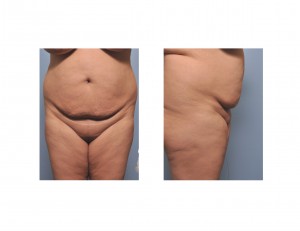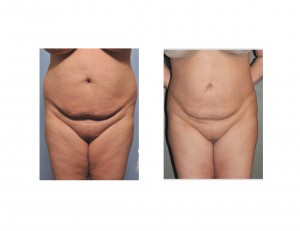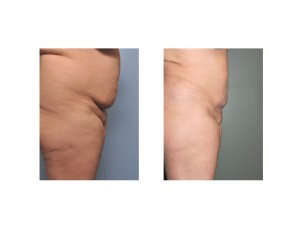Background:Liposuction is a well known surgical method of fat removal that has been available in the U.S. since 1981. It has gone through numerous technologic advancements, particularly in how the fat is mobilized prior to vacuum extraction. From ultrasonic to Smartlipo to Waterjet techniques, fat is being removed in an expanding variety of ways. But no matter what technology is used, liposuction is still am invasive procedure that is relatively traumatic procedure, particularly if you are a fat cell!
The most common body area of liposuction is the stomach and surrounding areas. Whether it be a man or a woman, this is the most frequent area of fat deposition that is genetically predisposed as an intrinsic method of energy storage, organ protection and temperature control. The only location of this fat that is accessible, however, is in the subcutaneous layer between the skin and the abdominal muscles. This must be carefully assessed prior to surgery, particularly in men, to be certain enough exists at this level to justify an invasive liposuction surgery.
The extent of abdominal liposuction rarely stops at just the front or the stomach area. The expanded fat contours extends around the waistline into the back and in women even includes the bra line or bra rolls. This makes abdominal liposuction a much larger treatable area than just the stomach. When all areas are put together, this is the largest surface area on the body that liposuction can treat.

Under general anesthesia she underwent traditional liposuction using an initial tumescent infiltration technique. Her full abdomen, flanks, and bra rolls were treated and a total of 4,400cc of fat aspirate was extracted. Total operative time was 2 hours and she was sent home in compression garments as an outpatient.



Case Highlights:
1) Liposuction is an effective fat removal procedure but is very traumatic to the body. For the sake of patient recovery, volumes extracted should be kept under five to six liters of aspirate.
2) Liposuction of the stomach and waistline into the back can make a big difference in the shape of the trunk and can result in significant weight loss as well.
3) The recovery from major trunk liposuction is not insignificant and can take several months for a full recovery. Patients should allow for sufficient time and limited activities for an adequate recovery process.
Dr. Barry Eppley
Indianapolis, Indiana


